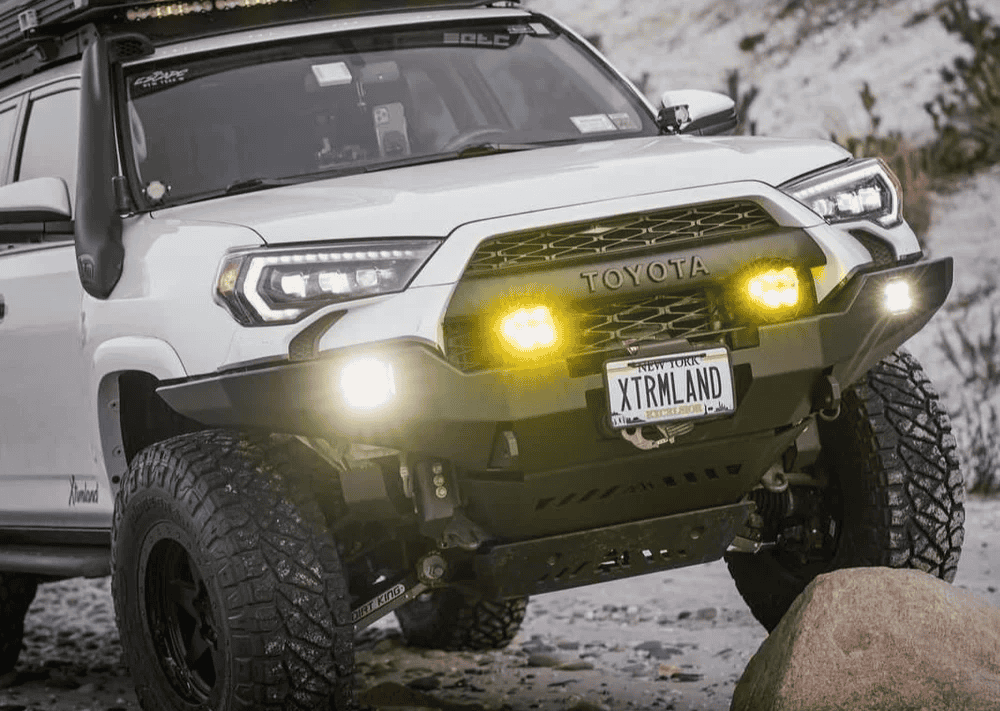Overland Vehicles

Highway sound grows with speed because airflow thickens into a boundary layer, then separates and swirls around sharp edges. That turbulence drums on glass and sheet metal and sends pressure waves into the cabin. The largest culprits are mirror housings, roof gear, door frames, A pillar trim, wiper pockets, and panel gaps. Even a minor misaligned seal can whistle. Roof crossbars and antennas can create a flute effect that spikes narrow band noise.
Two mechanisms dominate. First is broadband turbulence that sounds like steady roar. Second is tonal noise that comes from vortex shedding and resonance. When a part sings at a specific frequency you hear a whistle or hum. Both problems intensify with taller vehicles, bluff fronts, and add ons like light bars or cargo boxes. Vans and overland trucks see more of this due to flat sides, large mirrors, and roof systems.
Air wants smooth curves and rounded leading edges. Square edges trip the flow into chaotic swirls that hammer the body. A mirror housing that is blunt on the front and hollow at the back becomes a vortex factory. Roof racks placed close to the roof can trap a shear layer that rumbles the headliner. Even the A pillar can shed tiny tornadoes that buzz the glass.
Door and window seals act like pressure valves. If a primary seal is tired or compressed, air can leak around it and excite the inner trim. A small gap in the beltline molding can behave like a reed and whistle. The cabin itself can act like a resonator, where specific speeds trigger tone build up that feels fatiguing.
Round bars seem intuitive, yet ellipse shaped bars with tapered ends usually shed less noise. Forward fairings help, but the angle and gap matter as much as the part. A low roof box mounted close to the windshield can feed turbulent air directly to the cabin top. Cable runs, light brackets, and antenna masts add to the mix if they sit in the flow without a streamlined shape.
A complete approach treats the body, the airflow, and the acoustic path into the cabin. The first step is diagnosis. Map the current sound across speeds using A weighted decibel readings and take notes at steady states and during crosswinds. A roll down test with matched lanes can isolate speed based sources. Blue painter tape over seams is a quick way to identify leaking seals during a short drive.
The next step is to fix the airflow. Soften leading edges, add small fairings, and relocate or shape add ons that disturb the boundary layer. Then reinforce sealing with fresh door and glass gaskets and trim clips. Finally, block and absorb the energy that still enters with targeted damping and absorbers.
Replace fatigued primary door seals and add secondary bulb seals where the frame allows. Upgrade window run channels to curb glass flutter. For panels that act like drums, use constrained layer damping to stop flex, then add closed cell foam for decoupling and acoustic fiber to absorb. Focus on the wheel wells, firewall, A pillars, and roof over the front seats where wind pressure is highest.
Use mirror caps with radiused fronts and tapered tails. Fit an adjustable roof fairing that aligns with bar height, leaving an even gap. Choose aero crossbars with a teardrop profile and rotate them to the quiet angle. Tidy all cables, add trailing edge wedges to brackets, and consider small vortex generators only where testing proves a benefit.
Re test on the same route, same weather if possible, and the same speed intervals. Sound should drop several decibels at cruise, which translates to a clear change in fatigue and conversation ease. Aim for measurements at the driver’s ear and the passenger side to confirm symmetry. A phone app is helpful for trends, while a class one meter best captures accurate numbers.
A well tuned wind noise reduction system belongs in any long range adventure rig, especially one with a tall profile and roof gear. If you are planning an all terrain platform, quieting the cab makes every mile feel shorter and keeps voices clear without raising the volume. Our team integrates aero shaping, sealing, and acoustic treatment during the upfit process so form and function move together.
Explore the range of capable platforms on our Overland rigs page, then see how we tailor details on the Custom overland upfit path. If you are evaluating builders, learn more about our approach and customer experience at Why choose OZK.
We start with a conversation about your speeds, routes, and gear, then blueprint the aerodynamic and acoustic plan that fits your platform and travel style. From mirror re shaping to refined rack setup and precise sealing, the goal is simple: a calm cabin that carries you farther with less strain. Ready to turn the volume down on the wind and turn the journey up for the crew Send us a note and we will map your path to quiet.
Want highway calm on your next build? Tell us how you travel, and our team will design a quiet cabin plan that blends aero upgrades, sealing, and acoustic treatment. Share your goals in the form so we can blueprint a targeted wind noise reduction system for your rig.
ADDRESS:
6159 E Huntsville Rd, Fayetteville, AR 72701
PHONE:
(479) 326-9200
EMAIL:
info@ozkvans.com